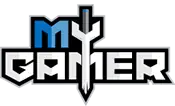Practically redefining the “breakout” genre, the PSN’s Shatter introduces new gameplay elements to industry’s oldest style of gameplay.
Just like Breakout, Arkanoid, and even Pong, the goal is to use a bouncing ball to destroy (or shatter) bricks while preventing it from falling off screen. What makes Shatter so unique is its approach to this tried-but-true style of gameplay. Besides beefing up the game with power-ups and boss battles, the player has the ability to produce a vacuum-like environment via the controller’s shoulder buttons. Sucking and blowing air to guide the ball not only adds more strategy and depth to the game, it also helps alleviate the pesky last brick problem.
Adding more mayhem to the gameplay is player educed multiball scenarios. As long as you have a couple back-up balls (or lives) in your inventory, you are free to launch them onto the game board at any time. Yes, juggling three balls is much harder than managing one, but you will need to use this technique if you wish to gain a higher rank on the game’s detailed leaderboards. Using more than one ball also can make some boss battles a little easier too.
Another unique feature to Shatter is the ability to collect shards. For every brick that is destroyed, it will release shards onto the game board. By using the paddle’s suck ability, these shards can be collected, and when a specific amount has been gathered, a powerful attack can be unleashed. Launching all the collected shards at the remaining bricks or boss is definitely one way to clear a level quickly and make the gameplay more interesting.
Every level in the game also varies significantly from stage to stage. One stage will take more of a widescreen approach by having the player block the left side of the screen (moving up and down) while the next can be a typical knock-the-ball-up at the bricks vertical style level. However, the circle shaped stages usually provide the most challenge as the player has to compensate for the “bend” effect. But no matter how the stage is shaped, the player only moves the paddle on one section of it; a non-Warlords approach.
Taking a note from Arkanoid, power-ups are released when certain bricks are busted. Besides finding 1-Ups (which lets the player go multiball), one power-up will allow the ball to blast through all bricks and will only bounce when it hits the boarder of the screen. Combine all the power-ups with the shard collecting super blast, and the gameplay in Shatter can be more action packed than you think. Bricks will even separate from their foundation and float toward the paddle. These loose bricks now become even more of a nuisance as they can destroy your paddle by touching it. Luckily, the player can activate a shield to plow right through these renegade bricks. Bringing balance to the game, using this lifesaving shield will deplete your shard collection, which prevents the player from constantly holding down this safety button.
Each of the game’s 10 worlds features multiple levels and concludes with a memorable boss battle. Some bosses might be defeated more by luck than skill, some might require highly accurate shots, or some might require that the player blow away some armor to reveal a weak point. But each boss is varied and different enough to provide a unique experience at the end of each world. And because the bosses are such a huge highlighting feature to this game, Boss Rush mode unlocks after the credits roll.
Inspired by other games like Geometry Wars and Boom Boom Rocket, Shatter uses a neon/bright color pallet to generate a pleasurable visual display. As good as the graphics are, they really do not compare to the game’s stellar soundtrack. In fact, the game’s soundtrack is available for purchase on the Shatter website…but here’s the kicker: downloading the soundtrack costs more than downloading the full version of the game. Like everyone else, even game developers are looking for creative ways to make a few extra bucks in this lovely economy.
Shatter is qualified as a good game, but there are major elements missing. The complete lack of multiplayer, and even general options, really create some strong limitations. Achieving higher scores on the leaderboards is cool, but it will be the only incentive to keep playing after the game is finished. Pong, and even Arkanoid: Doh It Again, just would not have been the same if it was limited to just a single player experience. The complete lack of any type of multiplayer component really makes this game feel a little unfinished. Sidhe, developers of this game, said that if there is a high enough demand, DLC might become available for Shatter. If this is the case, let’s hope for some online co-op, or even competitive, functionality. Trophy hunters won’t really have a difficult time either as most are unlocked through natural play.
For a price of $7.99, this download-only title provides an entertaining, but short, gameplay experience. The few hours that you will spend with this game, however, will definitely be entertaining. Shatter is by far one of the best, if not THE best, Breakout-style game in a long time. But the hard-to-ignore lack of multiplayer doesn’t allow for much replay or added value, although the leaderboards are nicely detailed. And presentation-wise, Shatter looks great but sounds even better. Despite the flaws in the replay department, Shatter is still one of the best games on the PSN.
President & CEO
















Leave a Reply